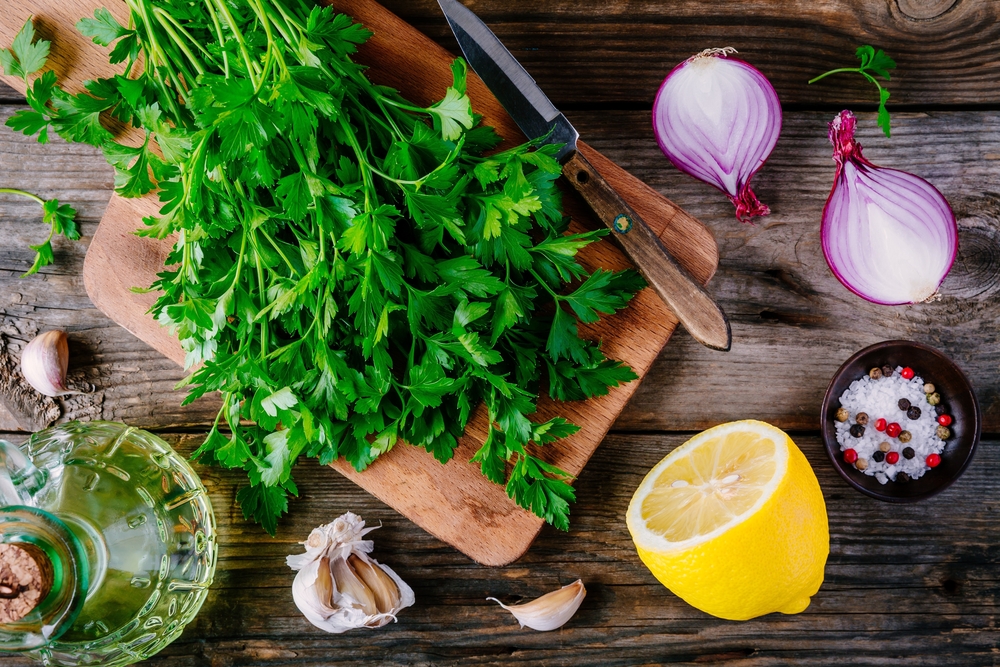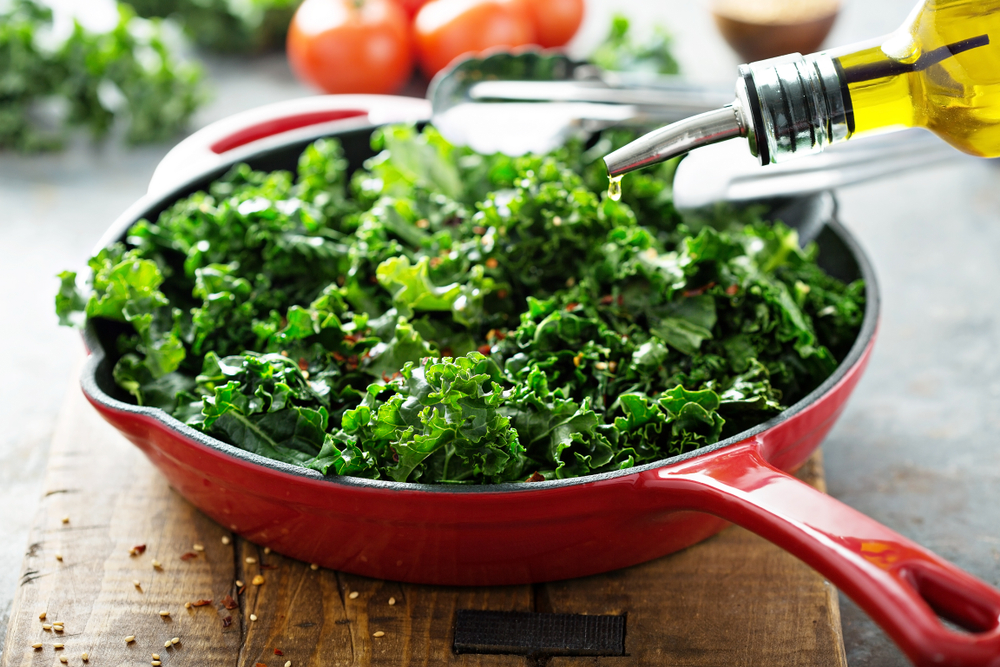Vitamin C is a very powerful antioxidant that’s vital to a healthy diet. It works to repair tissues, strengthen bones, protect teeth, form collagen, and plays a key role in supporting your immunity. As an antioxidant, it can fight against free radicals that can damage your skin, hair, and overall health. It is such a vital vitamin that healthcare experts advise consuming vitamin C every day.
Since vitamin C boasts so many health benefits, it’s almost unbelievable that almost 40% of American adults are not getting enough of it in their diet.
A vitamin C deficiency affects overall health from head to toe. Without enough vitamin C, your immunity is compromised, causing all sorts of health issues. Plus, you’re more likely to develop iron deficiency since vitamin C aids the body to absorb iron.
So, how do you include more vitamin C into your diet? It is well known that oranges and other citrus fruits contain high amounts of vitamin C. However, many folks are not aware that other fruits and veggies are also packed with this essential nutrient.
If you want to add more of this vitamin to your diet to boost your immune system and protect your health, look for methods to incorporate more of these fruits and vegetables into your daily menu.

1. Red, Yellow, and Orange Peppers
Sweet red, yellow, and orange bell peppers are great sources of vitamin C. According to healthcare experts, these colorful, crunchy peppers offer more than 100% of the recommended daily dose of vitamin C.
If you’re new to cooking bell peppers, you should know there are many ways to include them in your diet. You can stuff them with rice, make fajitas, incorporate them into a crudité platter, or throw them in a stir fry.
You may be wondering why we haven’t mentioned green peppers; it’s because green bell peppers provide only half as much vitamin C as the other bell peppers do. Green peppers are definitely a healthy option, but if you want to get the most vitamin C, choosing colorful peppers remains the best option.
2. Rose Hips
Rose hips are a wonderful source of vitamin C, providing 426 milligrams per 100 grams. These little red bulbs are the fruits of the rose plant and are filled with seeds.
It’s worth mentioning that rose hips cannot be found in the produce sections, but you can still include them in your diet. In fact, incorporating them into your diet is quite easy. Rose hip tea, which is available at most grocery stores and markets, is one of the greatest ways to consume these sweet fragrant bulbs.
If you grow roses in your garden, you can harvest them by cutting the tiny bulbs when they are ripe and discarding the seeds. Once cleaned, they can be used like apricots or cherries in desserts and jams.
Pro Tip: Before you harvest your rose plants, make sure that they haven’t been exposed to pesticides or chemicals.
3. Cantaloupe
Cantaloupe is a sweet, floral fruit that belongs to the melon family. It’s quite versatile: you can either eat it on its own, blended in a smoothie, in a fruit salad, or have it served with prosciutto as an appetizer. While cantaloupe is available all year round, this fruit is best in the summer months.
Consuming cantaloupe is a wonderful way to get more vitamin C because one cup provides more than the recommended daily amount of vitamin C. Even its seeds are filled with nutrients and essential vitamins; surprisingly, these seeds are also a great source of protein.
The best way to incorporate cantaloupe seeds into your diet is to use them like you would other kinds of seeds; you can blend them in sauces and purees, roast them as a salad topper, or toast them with salt.

4. Parsley
Parsley, one of the most popular leafy green herbs, is more than just a flavorful herb and decorative garnish; it’s actually a nutrient-dense herb with impressive health benefits. According to nutritionists, parsley is high in antioxidants and boasts significant amounts of vitamins K and A, and it provides more than half of the recommended daily amount of vitamin C in just a half cup.
So how can you include a half cup of parsley into your diet? Well, eating this herb by itself may not sound very appealing, but adding it to sauces or chutneys like pesto or chimichurri is the best method to up your parsley intake and benefit from its health benefits.
This being said, parsley is an awesome way to add extra leafy greens to your diet; just make sure it doesn’t get stuck in your teeth.
5. Mustard Greens
Chances are you most likely have a jar of mustard in your fridge, so you’re probably familiar with the bright yellow sandwich spread. However, you may not recognize as easily the mustard greens, which are the plants that provide the seeds to make mustard.
You can find mustard greens in most grocery stores and supermarkets. They have a spicy, distinctive flavor, and the thin, spinach-like leaves have an almost peppery tanginess reminiscent of arugula. While they belong to the Brassica family among kale and collard greens, they aren’t as bitter and dense. Instead, they have a light texture and an intense flavor.
During ancient times, mustard greens were used as a topical antiseptic for abrasion and cuts. They are now a part of a healthy diet providing more vitamin C than oranges, as well as a host of other minerals and vitamins. Plus, they are a versatile leafy green and easy to cook. You can braise them in vinegar or sauté them in butter; the possibilities are endless.
6. Kiwi
Kiwis, the fuzzy brown fruits with a delicious surprise inside, are one of the best sources of vitamin C. While they aren’t particularly appealing, once you get a taste of the green pulp with tiny black seeds, you’ll be hooked. They are tart and sweet, like a mix between a pineapple and a berry.
They also make a great sweet treat for healthy eaters. According to nutritionists, one kiwi provides 80% of the daily recommended amount of vitamin C.
Kiwis were once thought to be an exotic fruit, but as their popularity has grown, they’re now widely available in most grocery stores. They are a wonderful addition to a fruit smoothie or fruit salad. And thanks to their tart taste, they work well in salad dressing and marinades, too.

7. Kale
Kale gets often a bad flavor rap. Yes, it was quite popular in the news media a few years ago, and chefs were using it in everything from salads and smoothies to lasagna, even making chips with it, but suddenly it lost its luster and turned into the butt of jokes about healthy eating.
However, kale truly deserves the spotlight as a nutrient-dense leafy green. After all, it provides fiber, protein, iron, calcium, and essential vitamins. So, its popularity in the media wasn’t just hype. Here’s the proof: one cup of raw kale boast all of the vitamin C you need for that day.
Of course, not everyone loves kale. It is tough, crunchy, and slightly bitter and can be difficult to incorporate into your diet. If you’re not familiar with cooking kale at home, there are a few things you should know and some common mistakes to avoid when preparing kale.
When cooking with kale, you can prepare it like spinach. However, when preparing kale to have raw in a salad, you should massage (yes, you read it correctly) kale using your hands to break down its tough texture, and you should also eliminate the spine to make it more palatable.
8. Brussels Sprouts
Probably one of the most hated veggies in the world, Brussels sprouts are making a comeback, and it seems that they are given a second chance to win over reluctant eaters.
In fact, a Dutch scientist discovered a way to get rid of the chemical compound that gave Brussels sprouts their undesirable bitter taste. This is definitely good news for healthy eaters because Brussels sprouts provide too many health benefits to be avoided.
Brussels sprouts are known to be high in fiber and low in calories, with great amounts of minerals and vitamins. One cup of Brussels sprouts offers almost your recommended daily dose of vitamin C. The best way to get the most flavor out of Brussels sprouts is to roast them until they turn soft, but not for too long that they lose their texture.
9. Lychees
Lychees are tropical fruit grown in some parts of Southeast Asia and China. This unique fruit has a bumpy red outer shell and a transparent white juicy middle. The dark seed and the red shell are inedible, but the soft sweet fruit is perfect for juices and desserts.
In many regions of Asia, it’s very common to see mounds of lychees in the market, and lychee-flavored sweets and soft drinks are local favorites.
If you have never eaten lychees, you can find them in international markets and specialty grocery stores. They are absolutely worth looking for because not only are they sweet and delicious like a natural candy, but they are also rich in health benefits, including being packed with vitamin C. According to nutritionists, 10 lychees provide the same amount of vitamin C as an orange.
10. Papaya
Papayas are an oblong tropical fruit, and they grow in a tree that resembles a palm tree. They are thought to originate from southern Mexico, where they are often consumed with sprinkles of chili powder. While its tough outer skin is inedible, the pulp fruit is a popular breakfast in Latin America. The fruit also has bitter black seeds; these are consumed for medicinal purposes.
Papayas are a great way to include more vitamin C in your diet. According to nutritionists, one medium papaya has more than the full daily dose of vitamin C.
Now, if you are a Thai food lover, you may have tried green papaya in a Thai salad. Green papaya is basically unripe papaya, and it lacks the sweetness of ripe orange papaya. It has a crunchy texture and very mild flavor, and it’s commonly used like cucumbers or jicama in savory salads.
Need an immunity boost? Try These 5 Delicious Recipes!







